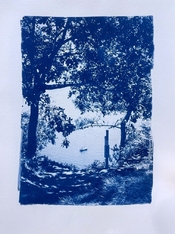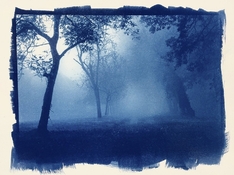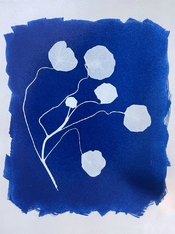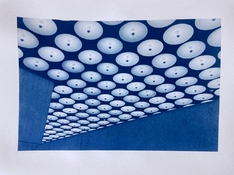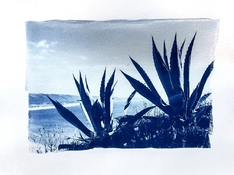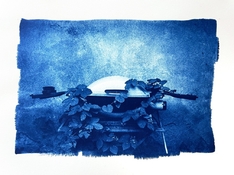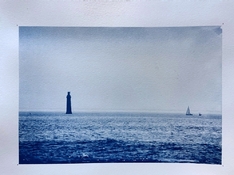nmp
Member
Immediately after exposure and before processing you should definitely see solarization or bronzing in the form of a grey, low density image. This will disappear upon further processing and consequently drying; I think treatment with peroxide might help too.
If you don't get any bronzing/solarization, you're either giving insufficient exposure (unlikely) or there's something weird with your chemistry and/or paper that inhibits Prussian blue formation. I'm getting a feeling we might have to start looking in that direction.
In case of cyanotype, the solarization (density loss with higher exposures) is due to Prussian blue, ferric ferrocyanide, that has formed during exposure getting photo-reduced further to ferrous ferrocyanide which is Prussian white, causing the observed tone reversal. However, Prussian white is unstable and get over time oxidized in air or with action of hydrogen peroxide. For this reason, this is evident mostly on the print right after exposure.
Definitely. I always just do doubles, starting at 15 seconds. The starting point depends a bit on the process/sensitivity and the intensity of the light source. Then I take it up to a time I still find acceptable; I'm not patient enough to hang around for an hour for something to expose, so I generally stop at 8 or 16 minutes. So that would be a series of 15s, 30s, 1 min, 2m, 4m, 8m 16m. Add 32m and 64m if you're patient, but frankly, that's way beyond what should be necessary even with a relatively ill-suited light source.
You beat me to my deleting the post subsequently. Looking at the equation more closely, it does look like a f-stop like sequence, except in the particular case the step is about 1.2x - kind of small to see any major changes in the density as the Dmax gets closer. My favorite way of doubling the exposure is do a X, X, 2X, 4X etc and you end up X, 2X, 4X, 8X etc.
:Niranjan.


